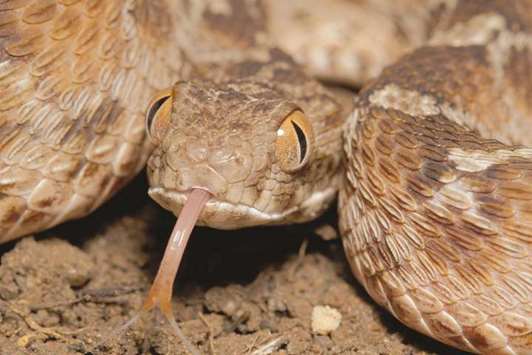It took only minutes for snake expert David Williams to feel the effect of being bitten by a deadly taipan. His breathing quickly became laboured, and he could only urge his colleagues at the film shoot to hurry for the antidote before falling into a coma.
“If I hadn’t got it, you would not be talking to me now, but digging my grave,” the Australian says dryly, saved by the prompt administration of a 1,800-dollar shot to counter the snake’s venom.
The 2007 incident in Papua New Guinea ended happily for Williams, a leading antivenom researcher. But things doesn’t always go so well for millions of people who are bitten annually around the world.
The majority of cases are in developing countries, where such advanced treatments are seldom available. Some 100,000 people a year die from snakebites, according to the World Health Organization (WHO).
With Williams’ support, WHO has now launched a campaign to tackle the shortage of approved antivenoms by boosting their production and range of application while still ensuring the required standards.
“In many countries, there is no quality control for medicines,” says WHO expert Micha Nuebling.
For example, some markets in Africa have for years been flooded with barely effective antivenom serums from Asia. People became sceptical and started returning to dubious local healers, who could usually do nothing for snakebite victims.
In Africa, the only producer of effective antivenom, the French company Sanofi, stopped production in 2014. “In sub-Saharan Africa particularly there are major bottlenecks in supply,” says Nuebling.
Not all antivenoms work for any bite. An Asian taipan’s bite, for example, can be countered only by one agent derived from venom of the same animal species. And serums made from the venom of Indian snakes have little effect in Africa, where up to 30,000 people die each year from bites. “In Ghana, an Indian product replaced the French one in 2004 and the death rate from snakebites rose sixfold,” says Williams.
Antivenoms available in India are also of doubtful quality, contributing to the annual snakebite death toll of more than 50,000 people. Overall, the number of deaths globally is as high as for dengue fever, a disease that gets significantly more attention.
In response, WHO has started placing snakebites on the list of forgotten tropical diseases. This has increased attention paid to the misery caused and will hopefully help raise more funds in wealthy countries for the development of accessible treatments.
WHO is now working on guidelines for the safe production of effective medications and is also testing its own antivenoms.
These are polyvalent, meaning they should be effective against bites from several types of snakes found in sub-Saharan Africa.
“The first phase of the lab testing has been completed, and next there will be tests for effectiveness in mice,” says Nuebling.
Production should start as soon as WHO approves the new antivenoms, as well as outreach work to overcome scepticism in local populations. However, it could still take months to get that far, he warns.
One criterion for sustainable production is that the manufacturer has large teams of horses: Poisonous snakes are milked, and then horses are infected with the venom components. They do not die from this, but rather form antibodies that are collected in blood sampling and used to make antivenom for humans.
Some vaccines would also be derived from “humanised cows,” says Nuebling, with the replacement of bovine immune system genes with human ones. But while cows featured in promising vaccine tests in the United States, they are not yet a viable alternative for production.
What precautions should tourists take when travelling abroad to places inhabited by highly dangerous snakes? “Do not walk barefoot in the bush, take a flashlight and illuminate paths in the dark,” says Williams. Mosquito nets pegged out beneath a sleeping mat can also help. But he notes that the risk of being bitten is minimal for tourists. Far more likely to fall victim are locals.
“Every tourist can help here: For 20 euros, you can equip a whole family in Asia or Africa with rubber boots,” he says. - DPA

The northeast African carpet viper, one of the snakes that can produce deadly venom.


